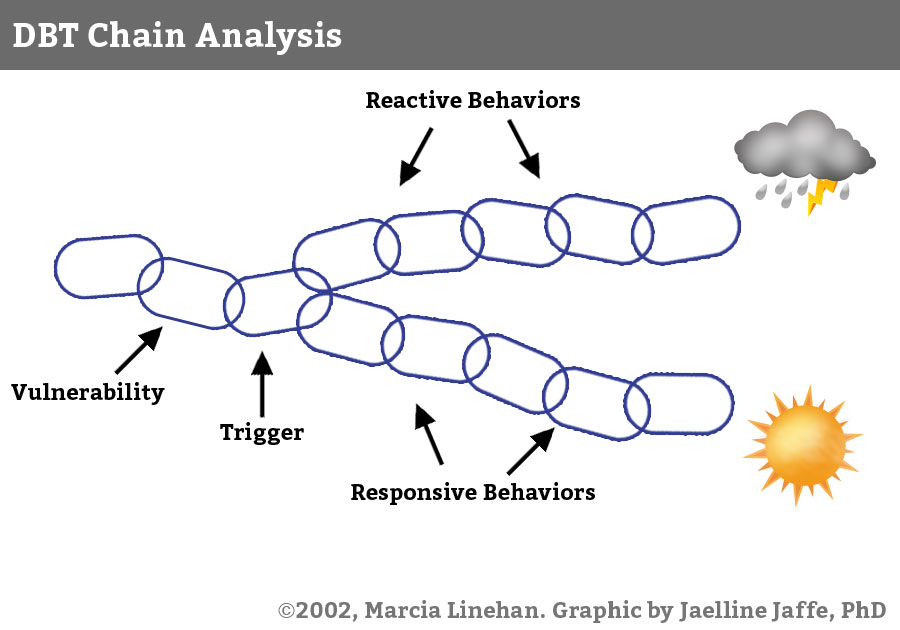Basic premise of DBT (Dialectical Behavior Therapy)
- Some people are prone to react in more intense manner toward certain emotional situations:
- Family
- Romantic
- Friend/work relationships
- For whatever reason, some people’s arousal levels:
- Increase far more quickly than the average person’s,
- Reach higher levels of emotional stimulation, and
- Take much longer to return to baseline arousal levels.
Theory behind Dialectical Behavior Therapy
- Everything is interrelated
- Reality is constantly changing
- Truth evolves from integrating/synthesizing differing, often opposing views
- Dichotomy of radical acceptance (accepting what is), while also seeking change to more effective way of being
- Especially useful for those with black-and-white, all-or-nothing thinking
Components of “Classic” DBT
1. Weekly Individual Therapy
- PURPOSE – To Decrease:
- Behaviors that interfere with life
- Behaviors that interfere with therapy
- Behaviors that interfere with quality of life
2. Weekly Skills Training Group
- PURPOSE – To Increase:
- Mindfulness/Acceptance
- Interpersonal Effectiveness
- Emotional Regulation
- Distress Tolerance
- Self-Management
- If no group is available, skills training can be incorporated into individual therapy
- This misses the advantage of social skill development with group support
3. Collaborative Model – working with various professionals, such as:
- Audiologist (for sound masking devices)
- Possibly pediatrician or psychiatrist (to oversee and manage medications)
- Psychotherapy (for individual and/or family counseling)
- Other professionals (Neurofeedback, Yoga, hypnotherapy, etc)
4. Behavioral Chain Analysis
- IDENTIFY:
- Prompting Event
- How to prevent occurrences
- Vulnerabilities
- How to reduce reactivity to Prompting Events
- Links in the Chain
- Identifying (slowing down) the steps that lead to reactions
- A: Actions
- B: Body Sensations
- C: Cognitions
- E: Events
- F: Feelings
- TB: Target Behavior
- Consequences (potential reinforcers)
- Identifying (slowing down) the steps that lead to reactions
- Prompting Event
How can DBT help with Misophonia?
DBT is based on CBT, with additional components that are especially helpful for those with Misophonia. Here is a very simplified explanation of ways that DBT can help with Misophonia:
- First, read the section at the end of the CBT page.
- In addition to the benefit of those CBT skills, DBT has a wide range of specific skills to help you:
- learn to calm your neurological system
- slow down your automatic “knee-jerk” reactions to triggers, and
- give you a moment to RESPOND, rather than REACT to those triggers.
- DBT also adds a component of Mindfulness, which teaches you focused, calming attention to each moment, so you can be more in the present and less constantly on guard for the next moment where you anticipate another trigger.
- Ideally, DBT also includes a Social Skills setting, which allows you to practice and rehearse your skills with other people.
Components of both CBT and DBT can also help family members manage the stress they experience when there is a misophonia person in their home.
In Dr. Jaffe’s practice, some DBT skills are incorporated into individual therapy sessions. A full DBT program may be offered at a local university or possibly with another therapist who conducts weekly 2-hour DBT Skills Training groups.

